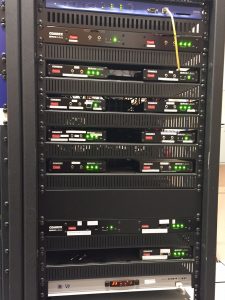BY FRANK ALWINE
COLCHESTER, VT. — Vermont Public Radio is Vermont’s NPR station. We supply local programming and news across the state of Vermont. I’ve been a broadcast engineer at VPR for two years now, focused on the studio engineering side of things. I’m responsible for everything in the path from the microphone to the STL that delivers our programming. It’s my job to oversee the broadcast chain at the main studio in Colchester, along with our outlying satellite studios in Norwich and Montpelier.

My predecessor installed and designed our current STL setup in 2010, and I inherited it when I took over the job. VPR has 14 full-powered transmitters, used by two networks (VPR News and VPR Classical), and we have more than 30 Comrex BRIC-Links handling all of our STLs.
For our network, we use private ELAN from our local internet provider, Fairpoint. It’s a 40 Mbps-outgoing connection here at the studio, and then each transmitter site gets a 3 Mbps bidirectional link. For all of those connections, we use the BRIC-Link. We also use a backhaul on our BRIC-Links, to transmit an off-air back feed.
For confidence monitoring, we have a profiler system that lets us record our programming. This feed is sent back to the studio over the BRIC-Link in a lower quality stream. It enables us to get actual audio back to the sites, and gives us some confidence. We use the AAC Stereo D8 codec to transmit from the studio to the transmitter, and for our return feed, we use the HE-AAC v2 codec. It works beautifully.
Talking with my colleagues before writing this story, we were at a loss as to what we should say. It’s kind of boring — our BRIC-Links simply work, and that’s pretty much all there is to it.
But as I was thinking about it, I realized that’s the best endorsement I could give. I don’t have to worry about these things — they just plain work all the time. Once or twice a year we’ll have to disconnect one and reconnect it, but since we purchased them in 2010, not a single unit has failed. That means 24/7, every single day, for the past seven years, these units have just been working. From a broadcast engineer’s standpoint, you can’t get much better than that.
Discover rock-solid STLs with BRIC-Link II.
Have questions? Send us an email!
Interested in a demo? Request a loaner.
Looking to buy? Find an authorized dealer.
This story was originally published in Radio World. To read the original story, click here.
The author is a broadcast engineer for Vermont Public Radio.
